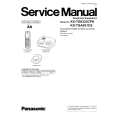|
No hay comentarios de productos.
GETTING TO KNOW YOUR MICROWAVE OVEN
This section discusses the concepts behind microwave cooking. It also shows you the basics you need to know to operate your microwave oven. Please read this information before you use your oven.
HOW YOUR MICROWAVE
OVEN WORKS
Microwave energy is not hot. It causes food to make its own heat, and it�s this heat that cooks the food. Microwaves are like TV waves, radio waves, or light waves. You cannot see them, but you can see what they do. A magnetron in the microwave oven produces microwaves. The microwaves move into the oven, where they contact food as it turns on the turntable. Your oven has a MAXWAVE� multiple microwave distribution system. Microwave energy is released from two locations, giving you better, more even cooking.
Oven cavity Magnetron
RADIO INTERFERENCE
Using your microwave oven may cause interference to your radio, TV, or similar equipment. When there is interference, you can reduce it or remove it by:
� Cleaning the door and sealing surfaces of the oven. � Adjusting the receiving antenna of the radio or � �
television. Moving the receiver away from the microwave oven. Plugging the microwave oven into a different outlet so that the microwave oven and receiver are on different branch circuits.
FOR THE BEST COOKING RESULTS
� Always cook food for the shortest cooking time
recommended. Check to see how the food is cooking. If needed, touch START/JET START� Feature pad while the oven is operating or after the cooking cycle is over (see the �Using JET START� Feature� section). � Stir, turn over, or rearrange the food being cooked about halfway through the cooking time for all recipes. This will help make sure the food is evenly cooked. � If you do not have a cover for a dish, use wax paper, or microwave-approved paper towels or plastic wrap. Remember to turn back a corner of the plastic wrap to vent steam during cooking.
Glass turntable
Metal floor
The glass turntable of your microwave oven lets microwaves pass through. Then they bounce off a metal floor, back through the glass turntable, and are absorbed by the food. Microwaves pass through most glass, paper, and plastics without heating them so food absorbs the energy. Microwaves bounce off metal containers so food does not absorb the energy.
TESTING YOUR DINNERWARE
OR COOKWARE
Test dinnerware or cookware before using. To test a dish for safe use, put it into the oven with 1 cup (250 mL) of water beside it. Cook at 100% cook power for one minute. If the dish gets hot and water stays cool, do not use it. Some dishes (melamine, some ceramic dinnerware, etc.) absorb microwave energy, slowing cooking times. Cooking in metal containers not designed for microwave use could damage the oven, as could containers with hidden metal (twist-ties, foil lining, staples, metallic glaze or trim).
7
|

